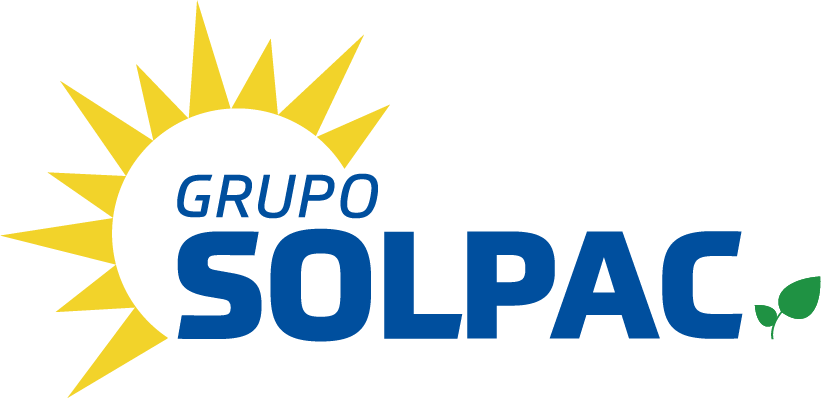Content
Later on, our developer who was responsible for the web app part needed to work on a mobile preview feature for it. Eventually, he took over all 3 codebases once they were fundamentally written and worked on their improvements. The key point in team structuring is finding the perfect approach to each case separately. To provide you with hands-on experience, we’ve decided to share some insights from Stormotion’s workflow with you.
And which should be maintained in their legacy form until the end of their lifecycle. Cloud-native application architecture, which is based on dynamically orchestrated containers, mirrors the qualities of elastic scalability and high availability of cloud infrastructures. Standard cloud development architectures don’t use containers and rely on the cloud-infrastructure itself for scalability and high availability. It is likely because the cloud provides better visibility into infrastructure usage and spend to developers and IT operations professionals. This increased visibility and awareness make it possible to change the way we architect and build our systems while also aligning incentives”. The evolution of cloud computing has also catalysed a parallel evolution in software architecture – the progressive disaggregation of applications into smaller components, or building blocks.
By keeping infrastructure and runtime code together, it’s easy to evolve them together, test them in isolation, share and reuse across projects, and keep them in sync and version them together. Release process – This process does a build of your packages, tests them appropriately, and publishes a new version to those package repositories. The release process is usually an automated pipeline that either runs on demand or on a periodic cadence like daily or weekly. As an example, the AWS CDK team uses a construct library called delivlib to manage their release pipeline. Depending on how reusable these application constructs are, they live in the same AWS CDK app package, or may be split out into separate packages. If the constructs in question are very specific to this particular application, it doesn’t make much sense to generalize them and package them differently.
DevOps Responsibilities: Cloud migrations
Deep Learning Containers Containers with data science frameworks, libraries, and tools. Apigee API Management Manage the full life cycle of APIs anywhere with visibility and control. Natural Language AI Sentiment analysis and classification of unstructured text.

By linking tickets to corresponding releases or changes, you can reduce errors and build apps faster. In a serverless computing or serverless architecture, you can host your applications on a 3rd party server which means you don’t have to maintain server resources and other server-related hardware. It is also called Function-as-a-Service as you actually deliver functions as a service over the cloud. Serverless architecture is similar to Platform-as-a-Service but differs in usage. In a serverless architecture, you host required functions, scale them and deliver them over the cloud without architecture responsibilities.
DevOps Practices
Network Connectivity Center Connectivity management to help simplify and scale networks. Cloud Load Balancing Service for distributing traffic across applications and regions. Transcoder API Convert video files and package them for optimized delivery. Anthos Config Management Automate policy and security for your deployments.

Kubernetes Applications Containerized apps with prebuilt deployment and unified billing. Cloud Healthcare API Solution to bridge existing cloud team care systems and apps on Google Cloud. Software as a Service Build better SaaS products, scale efficiently, and grow your business.
DevOps strategy: How DevOps help boost your productivity?
They can also be involved with the creation of an efficient, reliable cloud infrastructure that enables applications to achieve high availability. The emphasis on design requires architects to understand cloud technologies in detail and remain current with cloud developments. A key element in cloud success involves finding people with the right skills and expertise. Let’s take a closer look at a modern cloud team structure, consider some of the most important roles, and review the tasks and responsibilities needed for cloud computing success. Powerful DevOps software to build, deploy, and manage security-rich, cloud-native apps across multiple devices, environments, and clouds.
Strong communication skills, technical expertise, and team player mentality are important traits for a DevOps guy. Most importantly, commitment and buy-in from every member are also important. You can adopt a DevOps model without sacrificing security by using automated compliance policies, fine-grained controls, and configuration management techniques. For example, using infrastructure as code and policy as code, you can define and then track compliance at scale. Another common pattern we have seen, particularly among enterprise customers, is creating a collection of construct libraries based on the L2 constructs included with the AWS CDK, with a 1-1 mapping of subclasses.
Achieving the goal of full continuous deployment, without the need for human intervention, requires a high level of automation, and that automation isn’t possible without extensive amounts of monitoring. Create metrics, alarms, and dashboards to measure all aspects of your deployed resources. And don’t just measure simple things like CPU usage and disk space, also record your business metrics, and use those measurements to automate deployment decisions like rollbacks. Most of the L2 constructs in AWS CDK have convenience methods to help you create metrics, such as the metricUserErrors() method on the dynamodb.Table class. One business leader, such as a CTO or CIO, can be responsible for many, or even all, of an organization’s cloud projects.
Software Development
When you organize your app into units, we recommend that each unit be represented through a class that extends the Construct base class and not the Stack base class. Stacks are a unit of deployment, and tend to be specific to an individual application. By using constructs, you give yourself and your users, the flexibility to compose stacks in the way that makes the most sense for each deployment scenario. For example, you could compose multiple constructs into a DevStack with some configuration for development environments and then have a different composition for production. Cloud architects often help to design applications so apps function effectively in the cloud.
- Google Cloud Backup and DR Managed backup and disaster recovery for application-consistent data protection.
- A cloud engineer is primarily responsible for cloud implementation, monitoring and maintenance.
- Create a hiring strategy based on industry trends, technological analysis, and business requirements.
- The values get written to a file named cdk.context.json, which you should commit to version control to ensure future executions of your CDK app use the same values.
- Throughout the development cycle, the code is reviewed, audited, scanned, and tested for security issues.
- Financial Services Computing, data management, and analytics tools for financial services.
FinOps and Optimization of GKE Best practices for running reliable, performant, and cost effective applications on GKE. Migrate from Mainframe Automated tools and prescriptive guidance for moving your mainframe apps to the cloud. Modernize Traditional Applications Analyze, categorize, and get started with cloud migration on traditional workloads. CAMP Program that uses DORA to improve your software delivery capabilities. Your CDK app is written in a a general-purpose programming language, and could make arbitrary network calls.
Infrastructure as Code
Candidate preferences are the decision of the Employer or Recruiting Agent, and are controlled by them alone. As the Lead Backend Developer, you will be responsible for designing and building highly scalable backend systems using .NET Core. The ‘quality’ piece of QA may refer to attributes like performance, security, cost, compliance, privacy, and risk. Traditionally dev teams and ops teams worked separately, with separate leadership, responsibilities, and objectives to achieve. Typically the teams even worked in separate areas and rarely communicated.
An SRE team uses engineers with software development backgrounds to perform work traditionally done by an ITOps team. The goal for SRE engineers is to automate work that was previously done manually. Basically, any company with enough time and budget can build such a team since it’s multi-purpose.
You will work closely with their existing development team, ensuring that all projects are delivered on time and to the highest standards. The role can be worked remotely, but you will occasionally be required to attend on-site project milestone meetings and stakeholder engagement updates, typically no more than 4-6 times per month. DevOps organizations enhance the role of process improvement teams, from defining a process improvement project to managing implementation and monitoring the change process.
DevOps Responsibilities: On call (Incident Management)
Those changes are not only surface-level but involve a new cultural approach of shared responsibility and common goals. The business agility and momentum that is the result of being able to deploy releases daily, rather than monthly or at even longer intervals, means new products and services can be brough to market faster. In today’s digital environment, that agility can be the difference between success of failure. “In contrast, the data center in traditional environments is often a ‘black box,’ where information about processing and cycle cost is difficult or impossible to get.
Apigee Integration API-first integration to connect existing data and applications. Smart Analytics Generate instant insights from data at any scale with a serverless, fully managed analytics platform that significantly simplifies analytics. Data Cloud for ISVs Innovate, optimize and amplify your SaaS applications using Google’s data and machine learning solutions such as BigQuery, Looker, Spanner and Vertex AI. Smart Analytics Solutions Generate instant insights from data at any scale with a serverless, fully managed analytics platform that significantly simplifies analytics. Data Cloud Unify data across your organization with an open and simplified approach to data-driven transformation that is unmatched for speed, scale, and security with AI built-in.
Each organization has different DevOps requirements and each organization has a different perspective towards DevOps. With a lack of standards and policies, organizations should take extra care in preparing and implementing a DevOps team structure and strategy in the organization. Automatic scripts that can be executed at the granular level to facilitate flexible customization of exceptions and modes. After hardening is done, teams should verify if it meets the baseline and then continuously monitor it to avoid deviations.
